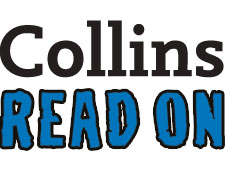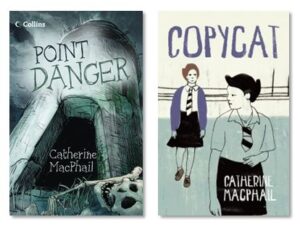We all want young people to read, to enjoy books, to get lost in a story. But how do you do that with readers who just don’t want to read, or who find it difficult getting through a book?
You have to grab those readers with that first sentence. You have to keep them hooked, keep them turning the pages. You have to give them characters they can relate to, characters they care about, and you have to bring your story to a conclusion that satisfies the reader. Most importantly, at no point can you write down to them using simple words, or giving them simple stories. No. They would see through that right away. You have to write a story that can be read and enjoyed by anyone.
Here’s a perfect example of what I mean. I once went into a school and a boy came up to me and said he had just finished Point Danger, and loved it. The boy with him agreed. ‘ Yes,’ he said. ‘It was a great read.’
As the boys walked away, the teacher told me that one of those boys was the worst reader in the class and the other was the best. I didn’t know which was which – didn’t matter. The great thing was they had both read and enjoyed the same book. What was a challenging read to one boy, was a quick, satisfying read to the other.
And that is what the Read On authors are told to do for the series: to write a good story. A story that might be a challenge for those struggling readers, but is so gripping they can’t put it down. So that by the end, when they have finished the book, they just might want to pick up another.
What I love about the Read On series is that story always comes first, and if you want to encourage struggling readers you have to give them a good story. Writing for the Read On series is not only enjoyable, but it makes me want to be a better writer, makes me think again about what makes a good book.
Two helpful classroom activities for any of the Read On books:
1. Rewrite and perform a scene from another character’s point of view:
For instance in Copycat, when Mimi joins the others at the disco the first time, is she really as innocent and clumsy as she seems? Is it all deliberate? Be Mimi, and re-write that chapter in the first person, as Mimi.
2. Record a vlog/confessional representing the hidden thoughts of a chosen character:
For instance, write and record, as Mimi, a video of yourself when you come home from the disco scene. Are you laughing at Chantelle, or are you really shy and feeling terrible about what’s happened? How does Mimi sound when she is alone? Does she really mumble?
These could be done with almost any fiction book in the Read On series using the vibrant characters in each book.

Cathy MacPhail has written over forty books for children, as well as plays for radio and short stories. She has a reputation for ‘gritty realism’, but loves writing funny books as well as ghost stories. Her first book, Run Zan Run, was inspired by the bullying her daughter suffered in high school. Many of her books have won awards, and she loves visiting schools to talk to her readers. She still lives in Greenock, in Scotland, where she was born.




